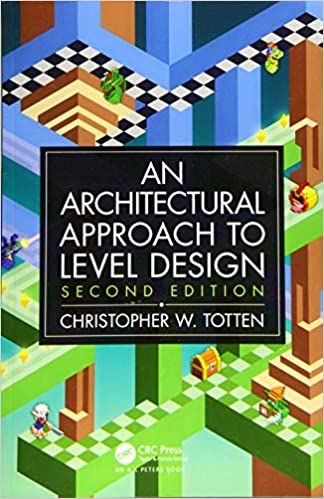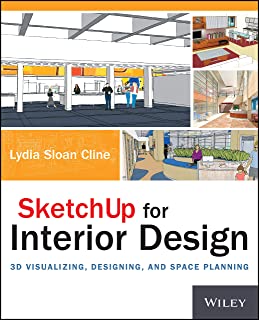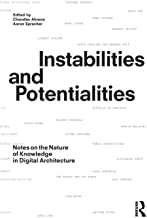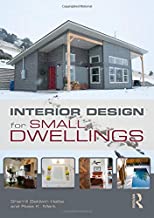Architectural Approach to Level Design: Second edition
Original price was: ₹5,707.02.₹4,565.62Current price is: ₹4,565.62.
ISBN: 9780815361367
Author/Editor: Christopher W. Totten
Publisher: CRC Press
Year: 2019
1 in stock (can be backordered)
Description
Written by a game developer and professor trained in architecture, An Architectural Approach to Level Design is one of the first books to integrate architectural and spatial design theory with the field of level design. It explores the principles of level design through the context and history of architecture.
Now in its second edition, An Architectural Approach to Level Design presents architectural techniques and theories for you to use in your own work. The author connects architecture and level design in different ways that address the practical elements of how designers construct space and the experiential elements of how and why humans interact with that space. It also addresses industry issues like how to build interesting tutorial levels and how to use computer-generated level design systems without losing the player-focused design of handmade levels. Throughout the text, you will learn skills for spatial layout, evoking emotion through gamespaces, and creating better levels through architectural theory.
FEATURES
Presents case studies that offer insight on modern level design practices, methods, and tools
Presents perspectives from industry designers, independent game developers, scientists, psychologists, and academics
Explores how historical structures can teach us about good level design
Shows how to use space to guide or elicit emotion from players
Includes chapter exercises that encourage you to use principles from the chapter in digital prototypes, playtesting sessions, paper mock-ups, and design journals
Bringing together topics in game design and architecture, this book helps you create better spaces for your games. Software independent, the book discusses tools and techniques that you can use in crafting your interactive worlds.
Additional information
| Weight | 0.115 kg |
|---|
Product Properties
| Year of Publication | 2019 |
|---|---|
| Table of Contents | Foreword Brian Upton 1. A Brief History of Architecture and Level Design BREAKING THE RULES OF LEVEL DESIGN AN EXPERIENTIAL HISTORY OF ARCHITECTURE Elements of Architecture and Level Design Functional Requirements Usability Delight The Beginnings of Architectural Sight Lines Architecture as Representation in Ancient Mesopotamia Architecture as Statement in Ancient Egypt Spatial and Symbolic Relationships in Greek Architecture Indian, Southeast Asian, and Asian Representational Architecture Linear Experiences in Roman Architecture Medieval Christian and Islamic Symbolic Architecture The Renaissance Return to Human-Centered Architecture Ornamental Reformations and Material Revolutions THE HISTORY OF GAMESPACES Board Design for Early Games Physical Gamespaces and Architecture Digital Gamespaces WAYS OF SEEING FOR LEVEL DESIGN SUMMARY CHAPTER EXERCISES ENDNOTES Industry Perspectives Reflections on Game Landscapes - Dr. Umran Ali 2. Drawing for Level Designers LEVEL DESIGN GOALS Adjustment Player Behavior Transmitting Meaning Augmentation of Space NON-DIGITAL LEVEL DESIGN TECHNIQUES Basic Drawing Techniques How to Draw a Line Contours and Line Weights Drawing with References Shading Hierarchical Drawing Types of Architectural Drawings Plan Section Elevation Axonometric Perspective Sketching and Journal Writing Designing on Paper Notation Methods for Level Design Proximity Diagrams Concept Diagrams Game Mapping Flow Charts Mark Brown's Boss Key Diagrams DIGITAL LEVEL DESIGN TOOLS CAD Programs Digital Art Programs Engine Primitives and Placeholder Art D Modeling Programs SUMMARY CHAPTER EXERCISES ENDNOTES Industry Perspectives Tools and Design - Robin-Yann Storm 3. Level Design Workflows FORM FOLLOWS FUNCTION Form Follows Core Mechanics Level Progression with Scaffolding Mechanisms LEVEL DESIGN WORKFLOWS Level Design Parti "Scenes" and Readability Non-Digtal Prototypes Digital Prototypes with Grayboxing Pacing Your Levels with the Nintendo Power Method Iterative Design with Playtesting Modular Level Design LEVEL DESIGN SCHEDULING The Toy Box Building from the Middle Building in Order SUMMARY CHAPTER EXERCISES ENDNOTES 4. Basic Gamespaces ARCHITECTURAL SPATIAL ARRANGEMENTS Figure-Ground Form-Void Arrivals Genius Loci HISTORIC GAMESPACE STRUCTURES Labyrinth Maze Rhizome SPATIAL SIZE TYPES Narrow Space Intimate Space Prospect Space MOLECULE LEVEL SPACES The Basics of Molecule Design Spatial Types as Molecule Nodes and Edges HUB SPACES SANDBOX GAMESPACES Pathfinding with Architectural Weenies Organizing the Sandbox: Kevin Lynch's Image of the City Landmarks Paths Nodes Edges Districts WORKING WITH CAMERA VIEWS D Views First Person Third Person D Views Side-Scrolling Space Top-Down Space Axonometric/Isometric Views ENEMIES AS ALTERNATIVE ARCHITECTURE SUMMARY CHAPTER EXERCISES ENDNOTES Industry Perspectives alt ctrl level design - Jerry Belich 5. Communicating through Environment Art TEACHING THEORIES FOR GAME LEVELS Behavior Theory and Operant Conditioning Montessori Method Constructivism SYMBOLS AND VISUAL DESIGN IN GAMES Implementing Symbols in Games Teaching with Symbols in Games Introducing Symbols Symbols as Guides Designing and Placing Symbols for Effective Communication Basic Color Theory Contrast Framing Rule of Thirds ARCHITECTURAL FORMS AND TYPES CONTROLLING INFORMATION IN MEMORY PALACES Certainty Uncertainty Risk Putting it All Together in a Memory Palace SUMMARY CHAPTER EXERCISES ENDNOTES Interview: Greg Grimsby 6. Building Exciting Levels with Dangerous Architecture SURVIVAL INSTINCTS AND GAME COMPLEXITY Maslow's Hierarchy of Needs "Bad Spaces": Vulnerability as a Game Mechanic Vulnerability as a Game Structure Vulnerability in Individual Game Challenges PROSPECT AND REFUGE SPATIAL DESIGN Creating Paths with Refuges, Prospects, and Secondary Refuges Prospects and Refuges in Architecture Prospects and Refuges in Video Games SHADE, SHADOW, AND SURVIVAL Shade Shadow Negative Space LOVING AND HATING HEIGHT SUMMARY CHAPTER EXERCISES ENDNOTES A Common Language for Level Design - Camden Bayer 7. Rewards in Gamespaces THE PURPOSE OF REWARDS Incentivizing In-Game Behaviors Enticing Exploration Creating a Sense of Curiosity THE TYPES OF REWARDS IN GAMESPACES Reward Vaults Rewarding Vistas Meditative Space Narrative Stages MAKING REWARDS EXCITING THROUGH DENIAL Zen Views Frank Lloyd Wright's Hanna House Religious Structures and Eastern Garden Design Layered Walls Oku GOALS AND REWARD SCHEDULES Long- and Short-Term Goals The Rod of Many Parts Reward Schedules SUMMARY CHAPTER EXERCISES ENDNOTES 8. Level -: The Tutorial Level THE MANY FUNCTIONS OF FIRST LEVELS Architectural Arrivals Interactive Arrivals BUILDING BLOCKS FOR TUTORIAL DESIGN Spatial Building Blocks Scenes Portals and Thresholds Controlled Approaches Meeting Spaces Behavioral Building Blocks Rewards in Tutorials Access as a First Level Reward Montessori Building Blocks Constructivist Building Blocks Proximity of Checkpoints DETERMINING PLAYER NEEDS PLAYTESTING IN-GAME TEACHING A Literature Game for those who Have Not Read the Book Teaching Molecular Immunology in Only Four Levels Developing Concepts into Challenges in a Math Game Puzzles as Problems, Levels as Lessons step tutorial design TUTORIAL ASSETS AND MEDIA Effective Visual Elements Audio Elements TEACHING GAMEPLAY THROUGH ADVERTISING METHOD Demonstrative Advertising with Scripted Events and Triggers Illustrative Advertising through Environmental Narrative Associative Advertising as Deconstruction SUMMARY CHAPTER EXERCISES ENDNOTES Case Study: Immune Defense - Melanie Stegman 9. Storytelling in Gamespaces EXPRESSIVE DESIGN Narrative Design and Worldbuilding Narrative Worldbuilding in Games MECHANICS VS. MOTIF Narrative as a Generator of Design Mechanics vs. Story Narrative Mechanics vs. Gameplay Narrative NARRATIVE SPACES Evocative Spaces Staging Spaces Embedded Spaces Resource-Providing Spaces ENVIRONMENT ART STORYTELLING Storytelling with Modular Assets Environment Art and Cinematography MATERIALITY AND THE HERO'S JOURNEY PACING AND NARRATIVE REWARDS The Dramatic Arc as a Pacing Tool Rewarding Exploration with Embedded Narrative Rewarding Exploration with Optional Narrative and Easter Eggs SUMMARY CHAPTER EXERCISES ENDNOTES Psychological Character Development in Halo Levels - Kelli Dunlap, PsyD. 10. Possibility Spaces and Worldbuilding UNDERSTANDING IMMERSION AND PLAYER INDIVIDUALITY The Immersive Fallacy Player Personalities ARCHITECTURAL PHENOMENOLOGY AND PLAY EMERGENT SPACES Emergence Possibility Spaces MINIATURE GARDEN AESTHETIC Overviews Overviews in Historic Games Overviews in D Tours Possibility Space and Procedural Literacy JAPANESE GARDEN DESIGN AND WORLDBUILDING Points of View in Japanese Gardens Scenic Effects Sensory Effects OFFERING EXPERIENTIAL CHOICE Introducing Choice Intelligible Choice Shaping Choice, Risk, and Reward "Metroidvania": worlds of rewards and possibility DEGENERATIVE DESIGN SUMMARY CHAPTER EXERCISES ENDNOTES 11. Working with Procedurally Generated Levels HOW I LEARNED TO STOP WORRYING AND LOVE PCG PATTERN LANGUAGES Patterns in Game Design Working with Patterns in Level Design BLENDING HANDMADE DESIGN WITH PROCEDURAL GENERATION Scenes as Patterns Combining Handmade Design and PCG Night of the Living Handmade/PCG Case Studies PCG Alternative Architecture in Left Dead Mixing Methodologies in Dead Man's Trail SUMMARY CHAPTER EXERCISES ENDNOTES Interview: Chris Pruett 12. Influencing Social Interaction with Level Design EMERGENCE AND SOCIAL INTERACTION LEARNING FROM URBAN EMERGENCE Modernism and Non-Emergent Cities Jane Jacobs and Mixed-Use Emergent Neighborhoods Integrating Urban Design into Multiplayer Gamespace THE IMPORTANCE OF SPAWN POINTS AND QUEST HUBS Shaping with Spawn Points Shaping Player Interaction with Quest Hubs Enticing Exploration with Side Quests HOUSES, HOMES, AND HOMETOWNS IN GAMES SUMMARY CHAPTER ENDNOTES 13. Sound, Music, and Rhythm in Level Design THE ROLE OF RHYTHM IN GAMES AND BUILDINGS Mood and Music Rhythm and Interactive Sound Rhythmic Entrainment in Games and Spaces Varying Structural Rhythms COMPLEMENTING LEVEL DESIGN WITH AMBIENT SOUND D Sound D Sound ENHANCING GAMEPLAY EXPERIENCES WITH SOUND DESIGN Sound as Gameplay Feedback Sound as Reward Sound as Narrative Indicators SUMMARY CHAPTER EXERCISES ENDNOTES CONCLUSION |
| Author | Christopher W. Totten |
| ISBN/ISSN | 9780815361367 |
| Binding | Paperback |
| Edition | 2 |
| Publisher | CRC Press |
You must be logged in to post a review.






Reviews
There are no reviews yet.